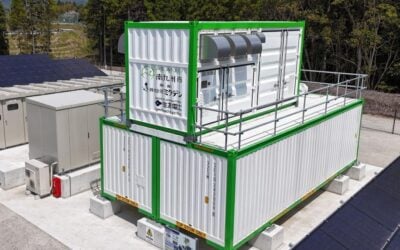Energy storage and microgrid software specialist Growing Energy Labs Inc (Geli) and storage system maker Imergy Power Systems will collaborate on a California Energy Commission-funded microgrid project which could save a college district US$75,000 a year in energy bills.
Imergy will install vanadium redox flow batteries at Las Positas College, Livermore, as part of the system, which will pair 250kw/1MWh of storage with an existing 2.35MW solar array. Geli’s energy management system and energy management software will operate the system, which has been funded by a California Energy Commission grant worth US$1.5 million.
Enjoy 12 months of exclusive analysis
- Regular insight and analysis of the industry’s biggest developments
- In-depth interviews with the industry’s leading figures
- Annual digital subscription to the PV Tech Power journal
- Discounts on Solar Media’s portfolio of events, in-person and virtual
The smart microgrid’s purpose is three-fold. The system will assist the integration of solar energy, help reduce peak charges and give the college’s home district greater energy independence. The microgrid will be linked with 10 electric vehicle (EV) charge stations and 3,200 tonne-hours of ice storage, in addition to the solar array which provides around 55% of the college’s electricity at present.
Imergy has also become the latest flow battery maker to have taking on gas turbine peaker plants in its sights. The company today launched the ESP250 series of batteries – vanadium flow batteries that have 250kW of output and 1MWh of storage that can be combined to scale up the size of energy storage systems. Imergy uses recycled vanadium for its batteries, taken from environmental waste products such as mining slag, which the company claims helps to keep its costs low. In addition to peaker plant replacement, the new batteries are designed to offer other grid-scale battery applications such as infrastructure investment deferral and provide frequency regulation services.
Chabot College, part of the Chabot-Las Positas Community College District which will benefit from the microgrid programme. Image: wikimedia user: Wsiegmund.
The Las Positas smart grid programme is part of a wider programme by CEC to develop a roadmap for smart communities, the Electric Program Investment Charge (EPIC). EPIC seeks to help universities and colleges deploy microgrids to reduce energy costs and give them greater control over consumption, while also increasing their energy safety and security. The new installation at Las Positas will also be used by utility Pacific Gas & Electric (PG&E) and smart grid company Olivine to assess its efficacy for demand response.
At the end of last year, the energy commission produced a roadmap for energy storage, in conjunction with the California Independent System Operator (Cal ISO) and the state’s public utilities’ commission (PUC). ‘Advancing and maximising the value of energy storage technology’ was developed in consultation with stakeholders and the report states that these stakeholders highlighted three particular types of challenge facing the development and deployment of energy storage: how to expand revenue opportunities, reducing costs of integrating and connecting storage to the grid and the need for “streamlining and spelling out policies and processes to increase certainty”.
As one of the leading world regions at present for energy storage, California already has significant measures in place to encourage deployment, not least of all Assembly Bill 2514 (AB2514), which mandates that investor owned utilities in the state must install 1.35GW of energy storage.






